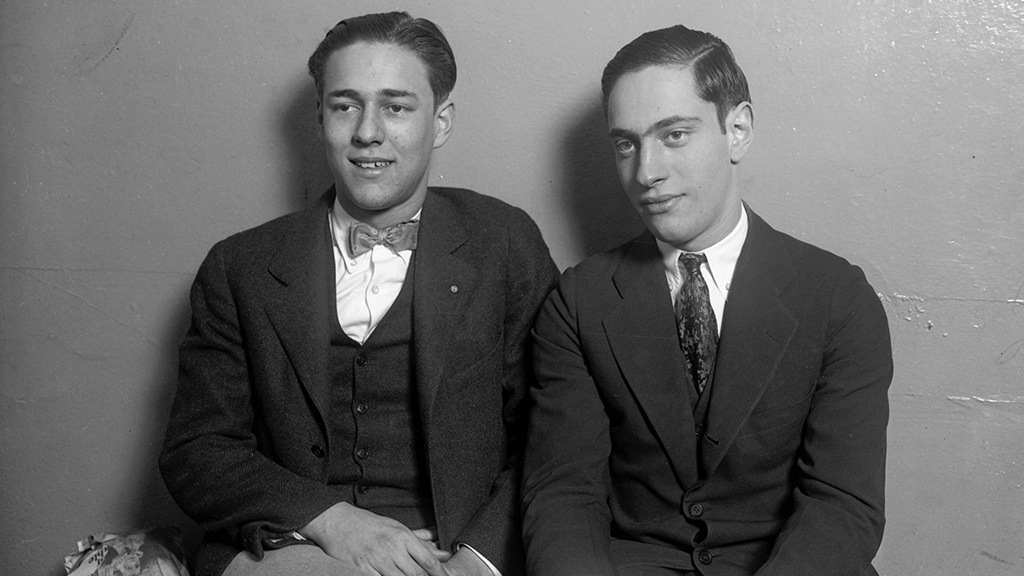The Benders were a cute family who ran a bed-and-breakfast inn from their cabin in Labette County, Kansas. However, over the course of two years, from 1871–1873, the family of four was also the cause of at least eleven murders. The family’s fate remains unknown, with wild theories ranging from the Benders being lynched, to them successfully escaping and becoming the Kelly Family, another family of serial killers.
The Bender family cabin was divided into two rooms by a canvas wagon cover. The front room had a kitchen and table, and the back room held small living quarters. The family itself consisted of John Bender, a man of about sixty years who spoke very little English; his wife Elvira (born Almira Hill Mark), who was supposedly so unfriendly that she was known by their neighbors as a “she-devil”; their son John Jr., a man in his mid-twenties who was prone to fits of random hysterical laughter, spoke fluent English with a German accent; and their daughter Kate, an attractive and well-educated young woman who was a self-proclaimed healer and psychic.
Kate conducted séances and claimed to be able to cure illnesses and ailments, as well as being an avid supporter of “free love”, the belief that the ideas of virginity and purity are mere social constructs that should be denounced and ignored. Her popularity from these beliefs drew plenty of customer attraction to the Benders’ inn.
Elvira, a bitter, much-disliked woman, was accused of murdering several husbands. She first married Simon Mark, who she claimed to have had twelve children with. She then married William Stephen Griffith, who disappeared under unknown circumstances. She then married John Bender, with whom she had John Jr. and Kate Bender. (It is to note, however, that some of the Benders’ neighbors claimed that John and Kate were actually husband and wife—not brother and sister.) Although the Benders were typically assumed to be German immigrants, there has not been any documentation found to prove that point.
In May of 1871, the body of a man known by just the name “Jones” was discovered murdered in Drum Creek, a popular trail that crossed through the Benders’ 160 acres of property. “Jones” was found with a slit throat and a crushed skull, the trademark injuries of the many following bodies that would be found in the same creek within the following year.
Drum Creek became so notorious for people going missing on it, that travelers began to actively avoid passing through along the trail. Many people were arrested without any basis by “vigilance committees”, although they were later released due to a lack of evidence. These “vigilance committees” also ran many innocent people out of the county, although their fears were not unfounded, especially as more and more people began to vanish.
George Newton Longcor disappeared while relocating to Iowa with his infant daughter, Mary Ann. His former neighbor, Dr. William Henry York, went looking for them and questioned those who lived along the trail. He was last seen at Fort Scott on March 9th, 1873, where he had left on his return journey to Independence, Kansas, only to never arrive home.
Ed York and Colonel Alexander M. York, William’s brothers, began a full scale search for the missing doctor. Colonel York, a Civil War veteran, lawyer, and member of the Kansas State Senate, led a group of fifty men in search of his missing brother. They questioned every traveler and homesteader along the trail, including the bed-and-breakfast of the Benders.
He arrived at their inn with the company of a man known as “Mr. Johnson” on March 28th, less than three weeks after his brother’s disappearance. Explaining his situation to the family, they admitted that William had stayed at their inn, but may have run into trouble with the local Native American populations. The Colonel agreed that this was possible, and stayed for dinner.
Six days later, on April 3rd, Colonel York returned with a squad of armed men after learning that a woman staying at the Benders’ inn had fled after being threatened with knives by Elvira. When questioned, Elvira claimed to not understand English. Colonel York asked again, after which she became furious and said, in English, that the woman was a witch who had cursed her coffee. She then ordered the men to leave her house.
Before the group left, Kate asked York to visit again the following Friday, alone, so that she could use her psychic abilities to help find his brother. The squad of men that accompanied York unanimously agreed that the Benders and their neighbors, the Roaches, had something to do with the disappearance and called for them to be hanged.
However, York insisted that evidence was needed, to which many nearby communities began accusing the Osage community, a nation of Native Americans that lived in the area, for the many disappearances. The Osage township arranged a meeting with seventy-five locals—including York and Johns junior and senior—where they swore to obtain a warrant to search every homestead along the trail between Big Hill Creek and Drum Creek.
Despite the suspicions on the Bender family, nobody watched them, which is how they were able to flee days before anyone noticed. Three days after the meeting with the Osage township, a boy driving cattle past the house noticed that the animals were unfed and the inn deserted. He reported the state of things to the township trustee, but poor weather meant that several more days passed before anyone could investigate.
The township trustee asked for volunteers to help investigate, to which several hundred people took up on the offer. When they inspected the property, they found the inn completely devoid of food, clothing, and possessions.
The place reeked of a bad smell, which was traced to a nailed-shut trap door hidden underneath a bed. After prying it open, they found a small empty room underneath, with sides that tapered inwards. The room was 7ft2 at the top, 3ft2 at the bottom, and six feet deep. The group broke up the stone slab flooring, which was stained with clotted blood, of the hidden room with sledgehammers, but found no bodies underneath. The odor was ruled to be blood that had soaked into the soil.
The volunteers physically moved the cabin to dig underneath it, but still found nothing. They then probed around the yard with a metal rod, focusing specifically on the disturbed dirt in the vegetable garden and in the orchard. Dr. York was found later that evening, shallowly buried face-down, with his feet just barely below the surface. The volunteers continued until midnight, marking nine more potential gravesites.
The next morning, the volunteers resumed work. Seven out of the nine potential graves contained bodies, with one of those graves containing two—later identified as George Newton Longcor and his eighteen-month daughter, Mary Ann. Another body was found in the well, alongside several mismatched body parts. All but one of the victims had had their heads bashed in with a hammer and their throats slit—so gruesomely that a local newspaper stated the bodies were “indecently mutilated”. The last was the body of a young girl, who had no visible injuries to point to the cause of death. Speculation suggests that she had been either strangled or buried alive.
A friend of the Benders, Brockman, was among the onlookers as the graves were being dug up. The crowd turned on him and hanged him from a beam inside the inn until he lost consciousness. They then revived him, interrogated him, and hanged him again. He was hanged a total of three times, after which they allowed him to go free.
The only thing found inside the house was a Roman Catholic prayer book that had notes written in German along the margins. These notes contained things like “big slaughter day, Jan eighth” and “hell departed”.
The Bender inn was completely destroyed by souvenir hunters, who took everything from the bricks that lined the hidden cellar to the stones that lined the well. For the capture of all four Benders, Kansas Governor Thomas A. Osborn offered $2,000 (a little under $50,000 today).
Their killing method is debated, but it’s usually assumed to be a full-family affair. The victim would be given the seat of honor at the dinner table, with their back to the curtain that divided the cabin into two rooms, and Kate would distract them. One of the men would come out from behind the curtain and strike the victim in the head with a hammer. One of the women would then slit their throat to ensure death. The family would then drop the body into the cellar by the hidden trap door underneath the victim’s chair. The victims came from all different backgrounds, some wealthy, some with near nothing. The general consensus is that the Benders’ only motive was for the thrill of murder.
People who have narrowly escaped the Benders’ inn have supported this supposed killing method. William Pickering, who had refused to sit near the dividing curtain because of the mysterious stains on it, stated that Kate Bender had then threatened him with a knife until he fled in fear. Father Paul Ponziglione, a Catholic priest, said he saw one of the Bender men concealing a large hammer; uncomfortable, Ponziglione quickly departed with the excuse that he needed to tend to his horse. A woman known as “Mrs. Fitts” heard a muffled movement behind the canvas divider while sitting with the Benders at dinner; Kate gave some sort of command to the person behind the divider, which made Fitts quickly flee.
Following the excavation of the graves, detectives soon found the Benders’ wagon twelve miles north of the family’s cabin, abandoned with a starving team of horses. After that, the trail goes cold. They managed to confirm that the family bought tickets on a nearby railway, but that’s where any surefire evidence goes cold.
Many vigilante groups have claimed to have killed the Benders. Most commonly known, one group said they caught the family and shot all of them but Kate, whom they burned alive. Another group said they lynched them before throwing their bodies into an Oklahoman river. Yet another claimed to have killed them in a gunfight and buried their bodies. No one ever collected the reward.
In 1884, an elderly man who matched John Bender Sr.’s description was arrested in Montana for a murder that was near Salmon, Idaho. The victim had been killed by a hammer blow to the head, in a similar fashion as the known victims of the Bender family. A request for positive identification was sent to Kansas, but the suspect severed his foot to escape his leg irons and ended up bleeding to death before his identity could be confirmed. Despite the lack of evidence, the man’s skull was displayed as being “Pa Bender”’s in a saloon in Salmon, until the Prohibition forced the saloon’s closure in 1920 and the skull disappeared.
The final estimated count of the family is twenty total victims (when including the mismatched body parts found in the well and the bodies found in Drum Creek), with no specific targeted demographics. While the family was never found, many people believe them to have renamed themselves to become the famous serial killers, the Kelly Family—who are believed to have murdered eleven travelers by use of a trap door underneath the guest chair at their tavern’s dinner table. But whatever did become of the family, it’s safe to say that the Benders truly were bloody.









